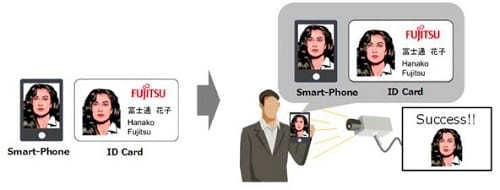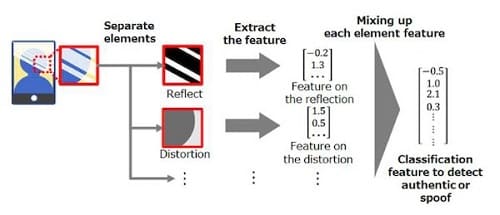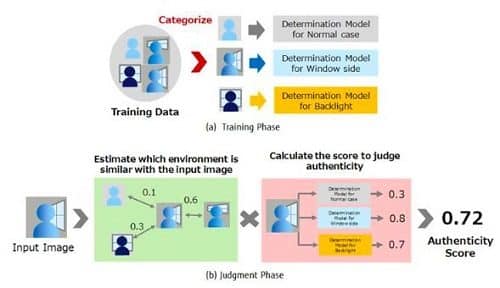Any wrong impersonation of photographs from facial images can now be curbed amidst growing risk of fraud as biometric authentication gains popularity. Also, remote authentication can be gained without compromising ease of face authentication

To detect forgery and solve stolen identity cases, present-day technologies rely on devices such as near-infrared cameras. While it ensures that any kind of forgery cannot be duplicated (by capturing detailed aspects of a person’s face from side-to-side), it has led to increased costs and the need for additional user interaction, slowing down the authentication process.
A case in example is biometric authentication. Although popular, there are certain challenges involved. When facial images are disclosed on the Internet via SNS, etc., a possibility emerges that the image may be stolen by malicious users. The loss of an ID card with a facial photograph makes facial authentication even more vulnerable (than other authentication methods, such as fingerprints).
This has made the development of technologies that can conveniently and inexpensively detect spoofing an important issue.
To tackle this challenge, Fujitsu Laboratories has announced the development of a new facial recognition technology through which conventional cameras can be used to strengthen the authentication systems. Subtle differences between an authentic image and a forgery can be detected, as well as any variations in appearance due to the capture environment is also considered. Any impersonation attempts in which a person presents a printed photograph or an image from the internet to a camera can now be prevented.
About the newly developed technology
Features of the developed facial-recognition technology are as follows:
- To eliminate forgery characteristic present in images, a forgery feature extraction technique helps express the difference between the forgery’s characteristic features and the real face as determinable values. First, the facial image captured by the camera is separated into various elements that exhibit the characteristic features of forgery, such as reflection elements and shape elements. Next, image processing technology is used to digitize the characteristic features of forgery for each of the separated elements, and the characteristics of each element are combined to generate a characteristic for judgment. This makes it possible to identify counterfeits without information based on user operations.

- The technology can correctly identify counterfeits by generating determination models that reduce the influence of variations by learning the categories of face images that have similar variations, such as face images taken at the office or face images taken by a window. Therefore, the earlier complication arising out due to the creation of a single determination model having varied image appearance caused by the capture environment, a single determination model was generated by training a system with face images containing various variations has been removed.
The development technology steps are divided into a training phase and a judgment phase. In the training phase, face images acquired in various environments are classified into categories such as window, backlight and normal, based on the capture environment, such as the intensity of light and the direction of light. Next, a judgment model determines whether the target is a real face or a counterfeit with machine learning, using the decision features generated by the forgery feature extraction technology for each category.
In order to estimate which of the categories defined in the training phase the input image capture environment is close to, in the judgement phase, the similarity between the input image and each category is calculated dynamically that identifies whether or not the object is a fake.

Results and future plans
The technology has made it possible to prevent unauthorised access at a low cost and improve security for workers trying to remotely access company systems from offsite.
Carrying forward the digital transformation of operations, Fujitsu aims to further improve the accuracy of its forgery detection technology with the aim of putting it into practical use in March 2021.






